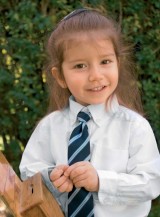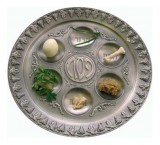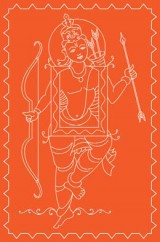Connect religion to children's lives, says Joyce Mackley, and they'll come up with some surprising insights...
Good RE is all about engaging children in exploring the things which matter most to millions of people, and enabling them to express their own insights in response. Challenge children to ask ‘big’ questions about what lies at the heart and soul of people’s lives and you’ll be engaging with the most fascinating subject matter – the world’s great religions and belief systems
 The key to teaching RE is connecting the subject matter - be it religious stories, teachings, festivals, celebrations or people - with the children’s own experiences. There are two main ways you can do this.
The key to teaching RE is connecting the subject matter - be it religious stories, teachings, festivals, celebrations or people - with the children’s own experiences. There are two main ways you can do this.
• Start by exploring a particular aspect of children’s lives and link this to religion. Certain themes lend themselves very well to this approach, such as belonging, home and family, and celebrating special times. The only danger is that lessons can place too much emphasis on the social and emotional aspects and fail to progress onto religion and beliefs.
• Begin with a religious story, picture, artefact or real life event and make connections with the wider human experience. For example, when exploring a festival, such as the Jewish Passover (Pesach), don’t stop at finding out about what Jewish people do, what they eat, where they worship etc. Ask yourself: ‘Why do they do this?’ Find out why the festival, in this instance, is so significant and meaningful for Jews that it continues year after year. Ask ‘why?’, and you will discover that Pesach is a celebration of freedom and identity, celebrating the time when God fulfilled his promise (covenant) and the Israelites were freed from slavery in Egypt to become a nation in their own right. Freedom is a ‘key idea’ which can be used to unlock the meaning of Passover with primary aged pupils. It connects with their own experience and generates spiritual questions about what it is to be human.
Try the engaging, exploring and expressing process. Here, I have applied it to activities that investigate why ‘freedom’ is key to the Jewish festival of Pesach (Passover). However, it can be applied to lots of other RE contexts.
One approach is to conceal some multi-sensory objects representing slavery and freedom inside a bag. These could be chains (to represent slavery/imprisonment); a glass jar containing salt water for children to taste (representing tears); green shoots (representing new life); a photograph of a sad and a happy face; and a Jewish Seder plate (as used at the festival of Pesach). Explore each object with the children, discuss what it could be and what it might represent. The objects symbolise two contrasting experiences; one good and one bad. Can the children think of what these might be?
Help the children to explore their own ideas and experiences about what it’s like to be ‘free’ (of school, of homework, to have fun, to be me!). Consider ways in which people today are unfairly treated and oppressed and why this happens. The class can also reflect on things which they might become ‘a slave to’ – such as such as their own wants, desires and emotions.

Having introduced the story of Passover, there are lots of ways you can develop and deepen children’s knowledge and understanding.
Why not try the following:
• Use drama techniques, such as freeze framing, to capture key moments in the story. Thought tracking, where the teacher asks a student to say what their character is thinking at a particular moment in the drama, is also useful for exploring people’s feelings.
• Organise the class into pairs or groups and ask children to prepare questions to ask (personally or via email) a Jewish person about how and why they celebrate Passover today.
• Show children a Seder plate, as .used at the Passover meal. Use symbolic items (salt water, bitter herbs, a roasted egg) to support a structured reflection activity. Children could consider questions such as ‘What makes me sad?’ and
‘What am I a slave to? Provide the class with a line drawing of a Seder plate that has speech bubbles within which children can write down their reflections.
There are lots of opportunities for using the creative and expressive arts to express deep understanding of key religious beliefs and teachings. For example:
• Dance (often used in Judaism to celebrate festivals, weddings, community spirit).
• Writing poetry (linked, for example, to songs of praise and joy in the Psalms of David).
• Using artwork to express a personal reflection on a theme at the heart of the religious practice or festival.
• Using drama techniques, such as human sculptures, to express spiritual and emotional experiences such as ‘escape’, ‘release’, ’ freedom’, ‘trust’, ‘faith’.
This process brings together the two key learning elements in good RE – learning about religion (developing knowledge, skills and understanding about religion and beliefs today) and learning from religion (responses and insights with regard to questions and issues arising from learning about religion).
Lots more practical and classroom friendly activities can be found in the termly publications from RE Today. We aim to share good practice and to inspire. For more details contact http://www.retoday.org.uk
Joyce Mackley is RE Adviser and Primary Editor at RE Today
 Try exploring these key religious themes with your class…
Try exploring these key religious themes with your class…
Good and evil
For example, the Ramayana, or the story of Rama and Sita, is a Hindu epic about the triumph of good over evil. This story, retold for thousands of years, is central to the Hindu festival of Divali. In the story, the evil demon Ravana, characterised by ten heads, acts as a visual metaphor for how clever and aware evil people are. Older children can design their own version of Ravana to show the evils of today’s world – and reflect on the forces for good needed to overcome such evils. The stories of the Garden of Eden and of David and Goliath from the Bible are two other great faith stories to engage older primary children in exploring ‘big questions’ about good and evil.
Service
For example, the Christian story of Jesus washing the feet of the disciples after the last supper is about humility and service. Use drama approaches to enable children to empathise with the feelings of the disciples and reflect on ways in which people today might ‘serve one another’ and the qualities and skills needed. Link to learning about ‘sewa’ or ‘service’ as a key value in Sikhism.
Peace
For example, peace is a central concept in Islam. “Islam” means “peace” . Children can consider the meaning of peace in Islam as a way into thinking about the importance of peace in their own lives, and the possibility of sharing it with others.
Two short films illustrating further examples of good primary RE in practice, are available for download from the NATRE website (http://www.natre.org.uk) from May 2009. Look out for ‘RE in the primary school’ and ‘RE in the curriculum’
How to use modelling to engage pupils with autism
Ace-Art-And-Design
Teaching five year olds to talk
Ace-Classroom-Support
